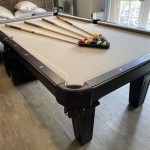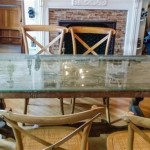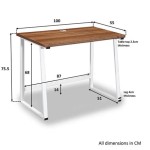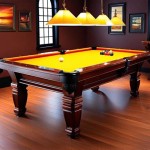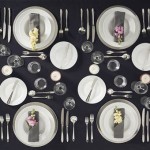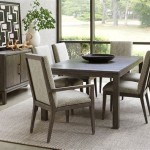How To Create A Glass Table Top
Creating a glass table top is a project that can significantly enhance the aesthetic appeal of a room. A glass surface offers a sleek, modern look and can protect the underlying table structure from damage. This article provides a comprehensive guide on how to fabricate a glass table top, addressing key considerations, materials, and procedures to ensure a successful outcome.
Planning and Design
Before embarking on the physical creation of a glass table top, a thorough planning stage is crucial. This involves determining the desired dimensions, shape, thickness, and glass type. These factors significantly impact the table's functionality, safety, and overall design.
Dimensions: The dimensions of the glass top should be carefully considered in relation to the table base or support structure. Accurately measure the existing table or the intended area for the table. Consider any overhang desired, which is the amount the glass extends beyond the base. A typical overhang ranges from 1 to 3 inches on each side. Ensure the overhang is balanced and proportionate to the size of the base to maintain stability.
Shape: The shape of the glass top significantly contributes to the overall aesthetic. Common shapes include rectangular, square, round, and oval. Custom shapes are also possible, but they require more complex cutting and fabrication processes. Consider the existing décor and the intended use of the table when selecting a shape. For example, a round table can facilitate conversation and interaction in a social setting, while a rectangular table is more suitable for dining or workspace.
Thickness: Glass thickness is a critical safety and structural consideration. Thicker glass is generally stronger and more resistant to breakage. The appropriate thickness depends on the size of the table top and the intended load it will bear. For smaller table tops (less than 36 inches), a thickness of 1/4 inch (6mm) may suffice. For larger table tops or those expected to support heavier items, a thickness of 3/8 inch (10mm) or 1/2 inch (12mm) is recommended. Consult with a glass supplier to determine the optimal thickness based on specific requirements.
Glass Type: Various types of glass are available, each with unique properties. Common options include annealed glass, tempered glass, and laminated glass. Annealed glass, also known as float glass, is the standard type of glass and is suitable for applications where safety is not a primary concern. However, it breaks into large, sharp shards, posing a significant safety hazard. Tempered glass is heat-treated to increase its strength and shatter resistance. When broken, it shatters into small, relatively harmless pieces, making it a safer option for table tops, especially in households with children or pets. Laminated glass consists of two or more layers of glass bonded together with an interlayer of plastic. This type of glass is extremely strong and, even when broken, the fragments remain adhered to the plastic interlayer, preventing them from scattering. Laminated glass offers the highest level of safety but is typically more expensive.
Edge Finishing: The edges of the glass table top can be finished in various ways, including seamed, pencil polished, flat polished, and beveled. A seamed edge is the simplest and least expensive option, involving the removal of sharp edges with a sanding belt. A pencil polished edge is rounded and smooth, providing a comfortable and aesthetically pleasing finish. A flat polished edge is flat and polished, creating a clean, modern look. A beveled edge involves cutting the edge at an angle, adding a decorative touch and enhancing the overall appearance. The choice of edge finish depends on personal preference and the desired aesthetic.
Materials and Tools
Having the correct materials and tools is essential for creating a glass table top. The required materials include the glass itself, suction cups for handling the glass, cleaning supplies, and potentially adhesive pads to attach the glass to the table base. The necessary tools include a glass cutter (if cutting the glass yourself), safety glasses, gloves, a measuring tape, a straight edge, a cleaning cloth, and a workspace.
Glass Acquisition: Procure the selected glass type and thickness from a reputable glass supplier. Provide the supplier with precise dimensions and specifications, including the desired shape and edge finish. If cutting the glass yourself, ensure you have the necessary expertise and equipment. It is generally recommended to have the glass professionally cut to ensure accuracy and safety.
Suction Cups: Suction cups are essential for safely handling large and heavy glass sheets. They provide a secure grip and prevent accidental drops or breakage. Use high-quality suction cups with a sufficient weight capacity.
Cleaning Supplies: Cleaning the glass thoroughly before and after fabrication is crucial for achieving a flawless finish. Use a glass cleaner specifically formulated for glass surfaces. Avoid using abrasive cleaners that can scratch the glass.
Adhesive Pads: Adhesive pads or bumpers can be used to attach the glass top to the table base and prevent it from sliding. Choose pads that are non-slip and compatible with both glass and the base material.
Glass Cutter (Optional): If cutting the glass yourself, a specialized glass cutter is required. Practice using the glass cutter on scrap glass before attempting to cut the actual table top. Ensure the cutter is sharp and well-maintained.
Safety Gear: Safety glasses and gloves are essential for protecting your eyes and hands from glass shards and sharp edges. Wear appropriate safety gear throughout the fabrication process.
Measuring Tools: A measuring tape and a straight edge are necessary for accurately measuring and marking the glass before cutting. Use high-quality measuring tools to ensure precision.
Workspace: Prepare a clean, flat, and stable workspace for handling and cutting the glass. Cover the workspace with a protective material, such as cardboard or plywood, to prevent scratches or damage to the glass.
Fabrication Process
The fabrication process involves preparing the glass, cutting it to the desired shape and size (if not pre-cut), finishing the edges, cleaning the glass, and attaching it to the table base.
Glass Preparation: Before beginning the fabrication process, thoroughly clean the glass surface with a glass cleaner and a clean cloth. Remove any dirt, dust, or fingerprints. Ensure the glass is completely dry before proceeding.
Cutting (If Applicable): If cutting the glass yourself, carefully measure and mark the desired shape and size on the glass surface using a measuring tape and a straight edge. Use a glass cutter to score the glass along the marked lines. Apply even pressure while scoring to create a clean and consistent line. After scoring, gently tap the underside of the glass along the scored line to initiate the break. Use caution when breaking the glass, as sharp edges can be dangerous. It is highly recommended to practice on scrap glass before cutting the actual table top.
Edge Finishing: If the glass edges are not pre-finished, use a suitable grinding or polishing tool to achieve the desired edge finish. For a seamed edge, use a sanding belt to remove sharp edges. For a pencil polished or flat polished edge, use a specialized glass polishing machine. For a beveled edge, use a beveling machine. Follow the manufacturer's instructions for the specific tool being used. Wear safety glasses and gloves during the edge finishing process.
Cleaning and Inspection: After cutting and edge finishing, thoroughly clean the glass surface again with a glass cleaner and a clean cloth. Inspect the glass for any scratches, chips, or imperfections. If any imperfections are found, consult with a glass professional for repair or replacement.
Attachment to Table Base: Position the glass top onto the table base. If using adhesive pads, apply them to the underside of the glass at strategic locations, ensuring they align with the support points of the base. Gently lower the glass onto the base and press down firmly to secure it in place. Ensure the glass is centered and evenly supported by the base.
By following these steps carefully, a glass table top can be successfully created, enhancing the aesthetic and functional qualities of the furniture. Always prioritize safety throughout the process and consult with professionals when needed.

How To Build Your Own Glass Desk With Pipe Simplified Building

How To Secure A Glass Table Top Base

Diy Modern Glass Coffee Table Ideas Doctor

A Perfect Replacement To Glass Tabletops Acrylic Tabletop

Woodsmith Glass Panel Coffee Table Plans Woods

How To Spice Up A Glass Top Coffee Table Silver Spring Md Mirror Blog

Create Memories Around An Exquisite Glass Dining Room Table Sans Soucie Art

Custom Fit Table Top Glass Kryger Carsten Auto Repair Ks Mo Ne Ia

Diy Glass Home Projects End Tables

Update A Glass Top Coffee Table With Pallet Remodelaholic
Related Posts

